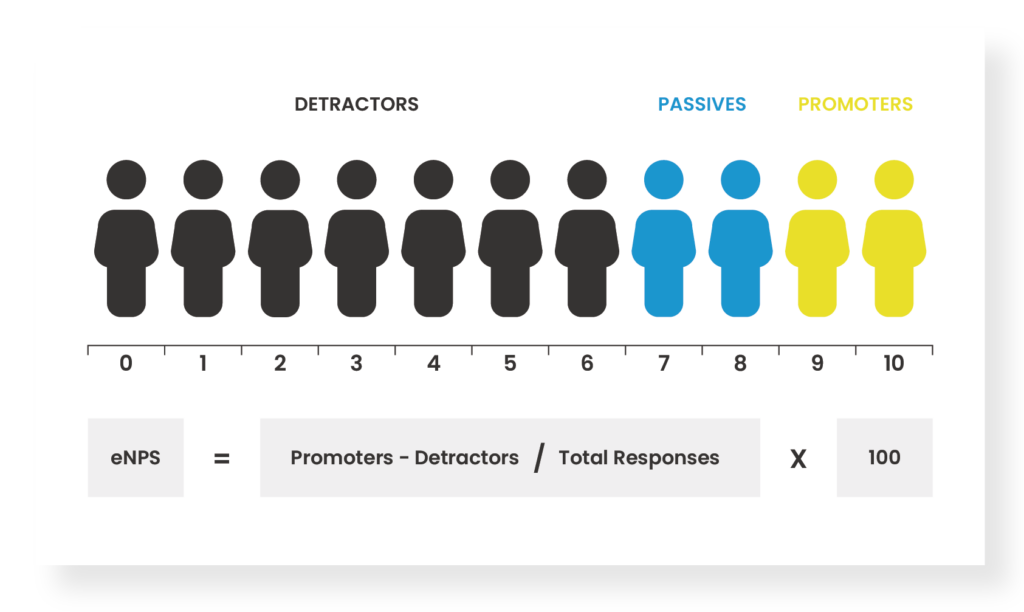Over the course of our agency’s three decades in business, a constant in marketing and advertising has been the value of success metrics. From overarching strategies to individual campaigns, success has to be measured to be believed. While that may seem like a no-brainer, the same mindset is applied much less often to company culture, which we consider as great a determinant of business success as client results.
HIGHLY ENGAGED WORKPLACES ARE:
More Profitable
More Productive
In fact, according to Gallup, highly-engaged workplaces are 21% more profitable than competitors and highly engaged employees are 17% more productive than the average worker. The delta between those figures highlights how a highly engaged company culture can actually amplify the output of individual high achievers.
Though company culture can often feel more abstract and subjective than all the other things modern companies measure, it’s still possible and worthwhile to do that. At AvreaFoster, we’ve prioritized one key metric that cuts through the noise and empowers positive change: Employee Net Promoter Score, or eNPS.
What is eNPS and how is it calculated?
Just like the Net Promoter Score you may be familiar with, eNPS is survey-based and poses a clear question to employees: How likely are you to recommend our company as a place to work? Respondents are asked to provide a rating from 0-10 and the eNPS is then calculated. To arrive at the score, responses are divided into three groups:
- Ratings of 0-6 are Detractors
- Ratings of 7-8 are Passives
- Ratings of 9-10 are Promoters
The eNPS is calculated using the simple formula: (Promoters – Detractors) / Total Responses) x 100 to provide a result that ranges from -100 to 100.

EXAMPLE
Let’s say your small business has 20 employees. You conduct an eNPS survey and find that your team consists of 10 Promoters, five Passives and five Detractors.
The formula would look like this: (10 Promoters – 5 Detractors) / 20 Responses) x 100 = 25 eNPS
Why is eNPS valuable? What can it tell you about company culture?
eNPS acts as a real-time pulse check on employee satisfaction and engagement, while also modeling a culture of transparent communication and continuous improvement. Since survey responses are anonymous and done without the pressure of a direct dialogue, employees are empowered to fearlessly provide honest feedback. The simplicity of this approach also removes workload as a barrier to entry.
All of these benefits result in a clear snapshot of company culture. Just like customer loyalty, employee loyalty is earned rather than owed — and eNPS sets a pretty high bar, with only the employees labeling the top two possible ratings as Promoters. Armed with their score, leaders can seriously evaluate whether company values are being felt by front-line employees, if transparency is a core tenet and above all else, how positive company culture really is.
What is a good eNPS? Are there eNPS benchmarks for each industry?
The answer to the first question is open-ended. While there are benchmarks and industry averages to consider, the trend of your eNPS is more important than any individual score.
Your initial survey could yield a remarkably positive result. Then, subsequent surveys could show that your score is slipping, though still generally positive. What’s more important — your score remaining positive or the clear signs that your culture beginning to backslide? The answer is the latter.
In terms of industry benchmarking, these scores can help provide context so you can judge your organization against those of your peers:
How can eNPS drive continuous improvement?
How can it grow over time?
A few practical recommendations as you consider eNPS:
Leverage eNPS surveys as part of a broader internal comms campaign.
- Center the campaign on transparent communication and an elevated dedication to the employee experience.
- Create messaging that presents the surveys as part of a larger whole, rather than just sending out a single email blast devoid of context.
- Level up company communication with tools like Slack or Teams
to drive alignment and emphasize culture no matter where employees are. Create comms touchpoints between in-person conversations and email.
Be open about the results.
- Regularly report eNPS scores, integrating them into quarterly or annual meetings.
- If they’re positive, make that a point of pride during the next all-hands meeting.
- If the scores indicate the need to improve, address that reality head-on publicly and provide an overview of the steps leadership will take to course-correct.
Use technology to improve the employee experience and learn where to improve.
- For example, we use 15Five for weekly status check-ins, shout-outs and annual reviews, as well as Officevibe for more detailed, anonymous input on culture and empowerment.
It should be noted that the burden of improvement belongs to leadership, and there is serious cultural harm that can be done by rolling out an eNPS initiative and not responding to the feedback by implementing change. What that communicates is indifference about the experience of employees, which is only going to drag company culture down and the eNPS with it.
How does eNPS success connect to client success?
As Gallup points out, there is a direct correlation between an engaged workforce and a healthier profit margin. But there are more ways that eNPS-driven culture improvement ladders up to business success.
Simply put, employee promoters are a conduit to client promoters. We’ve seen it first-hand; clients take notice when employees seem motivated, creative and happy. They are more open to new ideas because they can feel the care that went into the work and have greater trust in the team behind it.
The energy of this kind of culture is contagious and it results in one of my favorite things to hear from a client: “I always look forward to my meetings with your team.”
It’s no secret that metrics matter in business. The same holds true when managing your company culture. Begin measuring and monitoring your eNPS over time and watch as your organization begins to foster more positivity, onboard and integrate more effectively, and execute at a higher level than before — not by introducing a new service line or automating a process, but by caring more and modeling continuous improvement.
Looking to bring your digital marketing and internal comms efforts into focus?




